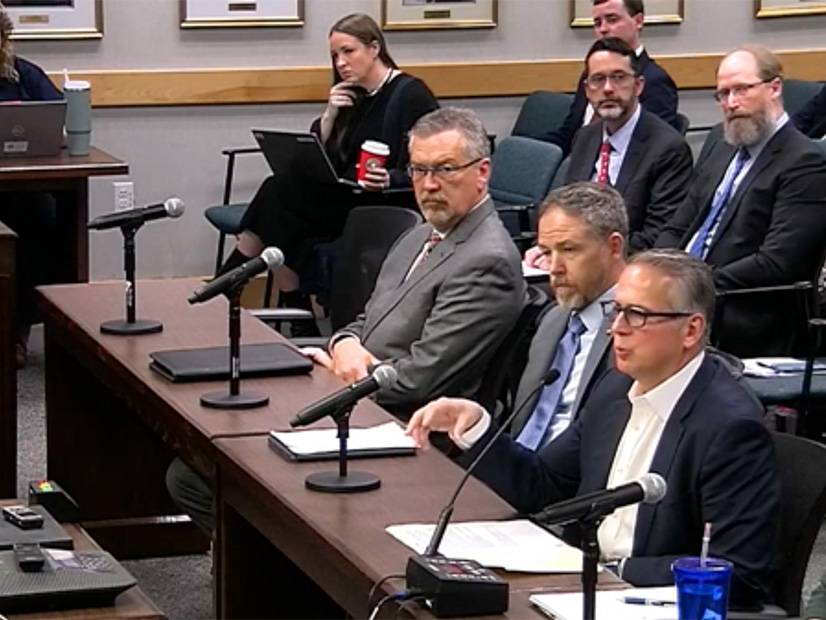CALIFORNIA
CEC Denies Shasta County Wind Farm
The Energy Commission denied the approval of the Fountain Wind project, ending a yearslong battle by Shasta County to stop the project from moving forward. In October 2021, the Shasta County Board of Supervisors voted down the project, denying ConnectGen’s appeal of the planning commission’s decision not to approve the wind farm. But the California Legislature in 2022 approved AB 205, which allowed the commission to consider approving the project even though Shasta County rejected it.
More: Redding Record Searchlight
PUC Votes to Keep Utility Profits High
The Public Utilities Commission voted 4-1 to keep utility profit margins near 10% despite calls to cut them to 6%. The four commissioners who voted to keep the return on equity at about 10% said they believed they had found a balance between the 11% or higher rate that Southern California Edison, Pacific Gas and Electric, San Diego Gas & Electric and SoCalGas had requested and the affordability concerns of customers. The vote will slightly decrease the profit margins beginning next year. Edison’s rate will fall to 10.03% from 10.3%. California has the nation’s second-highest electric rates after Hawaii.
More: Los Angeles Times
MASSACHUSETTS
DPU Opens Probe into Volatile Energy Bills
Nine weeks after Gov. Maura Healey requested a review, the Department of Public Utilities opened an investigation of all delivery charges on electric and gas bills. The DPU said its probe “will examine the causes of bill volatility and promote a greater understanding of rates for customers to take greater control over their energy bills.” It also will explore whether to establish limits on how much charges can increase from month to month and whether certain charges should be eliminated, consolidated or “redesigned as a fixed charge.”
More: WBTS
MICHIGAN
Lawmakers Introduce Bill to Repeal Data Center Tax Incentives
A bipartisan bill introduced in the Legislature would repeal the state’s data center tax incentive laws. The existing data center laws provide sales and use tax exemptions for tech companies. The tax revenue otherwise would go to the state’s school aid or general fund. Under an earlier version of the incentive, eligible data centers built between 2020 and 2024 avoided paying about $13 million in taxes. The proposed repeal comes as public outrage over data centers is reaching new heights. The data centers are also poised to derail the state’s clean energy transition.
More: Inside Climate News
NEBRASKA
OPPD Again Delays Plan to Stop Burning Coal at North Omaha Plant
The Omaha Public Power District Board of Directors voted to delay decommissioning the North Omaha Station’s coal-fired units. OPPD for more than a decade had planned to end coal use at its North Omaha power plant. After multiple setbacks, the utility aimed to transition the two coal-fired units to natural gas by the end of 2026, but new requirements from SPP and an increase in energy needs delayed the decision. The board delayed a previous plan that would have phased out coal in 2023. A 2022 vote pushed the conversion until at least 2026, in large part because of a regional backlog in replacement power. OPPD said if the timeline progresses as expected, the conversion could take place in 2028.
More: Nebraska Public Media
OHIO
Settlement Offer Would Give $275M to FirstEnergy Customers to End HB 6 Probes
Utility companies affiliated with FirstEnergy have agreed to provide $275 million in restitution to customers under a proposed settlement that would resolve years of investigations tied to the passage of House Bill 6 and related regulatory violations.
The proposed stipulation, filed with the Public Utilities Commission, covers Ohio Edison Co., The Cleveland Electric Illuminating Co. and The Toledo Edison Co. and would end four major commission investigations along with several related complaints if approved. On Nov. 19, the PUC and companies resolved three of the four investigations and had tentatively settled for $250 million in total for misconduct related to the HB 6 bribery scandal. But the latest stipulation adds another $25 million to the settlement and specifies all the money will go to customers.
More: Cleveland.com
TEXAS
AG Sues Xcel Over Role in Smokehouse Creek Fire
The Office of the Attorney General has sued Xcel Energy for its role in the 2024 Smokehouse Creek Fire, which was the largest wildfire in state history. Attorney General Ken Paxton accused Xcel of making “false representations about its safety commitments” and of ignoring warnings about infrastructure problems. He claimed that those actions “created a substantial wildfire risk.” Texas A&M Forest Service investigators found that power lines started that fire and the Windy Deuce fire. The fires burned nearly 2,000 square miles in Texas and Oklahoma. Xcel has agreed to $361 million in 212 settlements, with 42 claims still pending.
More: KXAN



